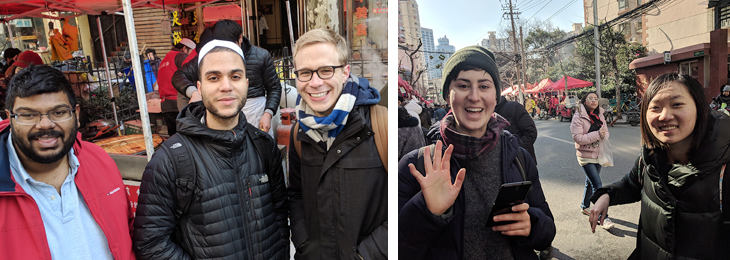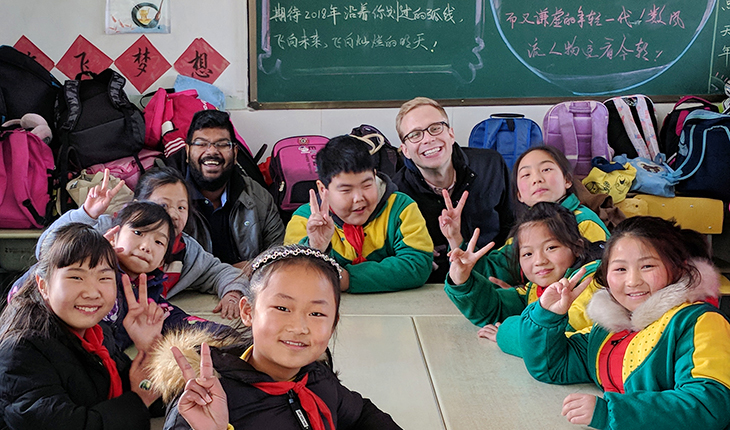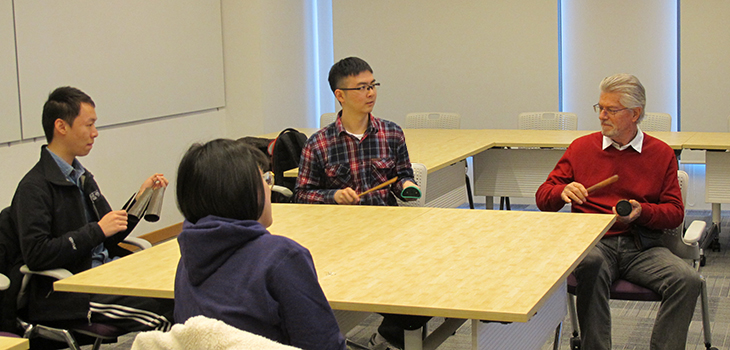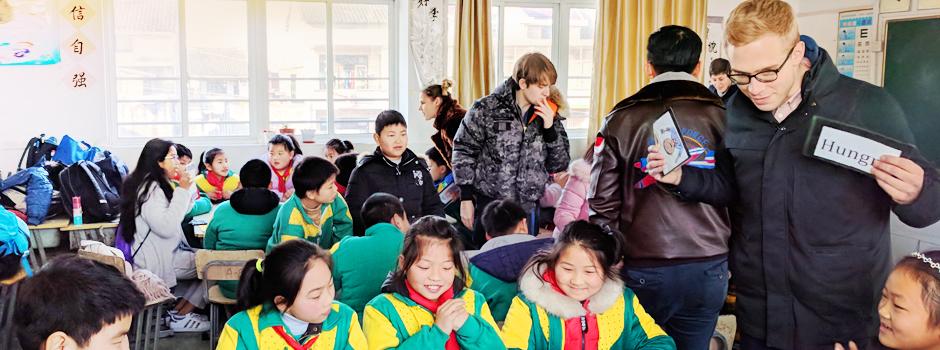Over winter break, 50 students from around the world took part in five January term (J-term) courses at NYU Shanghai, which ranged from a research and design sprint tackling urban aging to hands-on woodblock printing.
NYU study-away students and visiting students from other universities made up 75 percent of the J-term student body this year, making it a truly global cohort.
Here is a closer look at some of the courses they took:
Global Perspectives on Migration and Ethnicity

In Professor Hua-Yu Sebastian Cherng’s class of Global Perspectives on Migration and Ethnicity, students took a field trip to Shanghai Huxi Mosque and the nearby Muslim Market to learn about the history of religion in China and observe its integration with urban life.
The course studied both international and domestic migrations and how they shaped notions of ethnicity in different cultural contexts.
Professor Cherng also partnered with Stepping Stone, a non-profit English-teaching program that connected student volunteers with primary school children of Chinese migrant workers. “Students were exposed to one of the unique social phenomenons of China, where migrant workers make up a large portion of China’s entire working population, but their children have limited access to education and healthcare due to restrictions of the current household registration (Hukou) system,” Professor Cherng said.

He also asked students to compare China’s case with post-1960s immigration to the United States, analyzing how the process affected self-identity. "Although there are similarities between immigration to the US and migration in China, such as the desire for individuals to build a new and better life, there are important differences. Immigration in the US has always shaped notions of race and ethnicity. In contrast, rural to urban migration further highlights the strains of the hukou system, not just in terms of access to social services, but to identities."
Yang Zhengyao ‘18, an IMA major, admitted that he benefited from the course’s quantitative methods used to analyze migration, saying it helped deconstruct many previous stereotypes he had. “We learned to first challenge assumptions based on correct data, and then explain the data from multiple viewpoints, whether be it sociological, anthropological or personal experience,” he said.
Rhythm
Professor Godfried Toussaint, head of the Computer Science Program at NYU Abu Dhabi, brought his interdisciplinary and multicultural course Rhythm to Shanghai. The intensive course examined what rhythm is and how it is manifested in everything from music to visual arts.

A former guitarist and current drummer, Toussaint taught students the rudiments of drumming and how to read music, as well as how to analyze and generate rhythms using algorithms and computer software. Along with having written assignments, the class solved musical time pattern puzzles and used instruments to practice rhythmic melodies in class.
The class also attended a Peking Opera performance, set with the task of actively taking notes on the rhythms they heard and relating them to the ones learned in class. “Surprisingly, they found five rhythms that were exactly like African rhythms,” Professor Toussaint said. “We also analyzed the properties all good rhythms have. One of them is that the Euclidean Algorithm distributes sounded beats and silent beats as evenly as possible in a cycle. That’s one of the requirements for a good rhythm,” he said. The course concluded with student research presentations including a comparison between bird rhythms and music rhythms, the application of phylogenetic analysis to a corpus of electronic dance music (EDM) rhythms, and the application of machine learning to the creation and evaluation of good rhythms.
--
Learn more about NYU Shanghai’s J-term and Summer program on our website.


